I am using MySQl Work-bench 2 to construct a schema diagram., by reverse engineering the database. However, when I included 450 tables., the tables are getting overlapped with one another and its practically impossible for me., to rearrange because there is no space.
The arrange option in Mysql work-bench is also not so helping. Is there any tool available in internet., which could also rearrange. Or I only have to do the divide and conquer method. i.e partially selecting part of the tables and constructing the diagram part by part.
